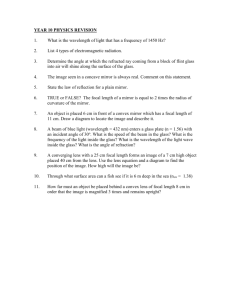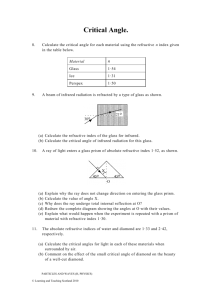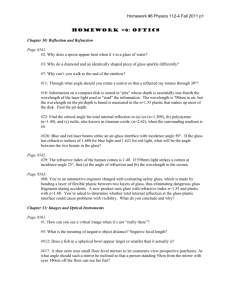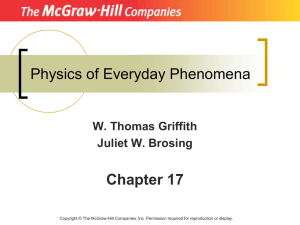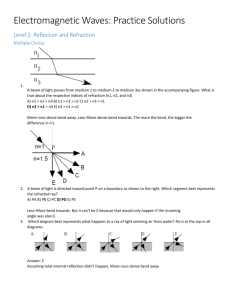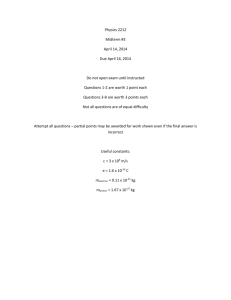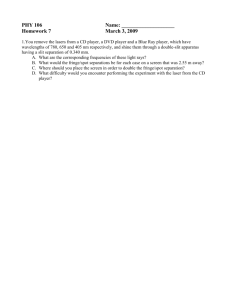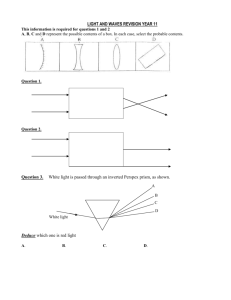Reflection and refraction
advertisement
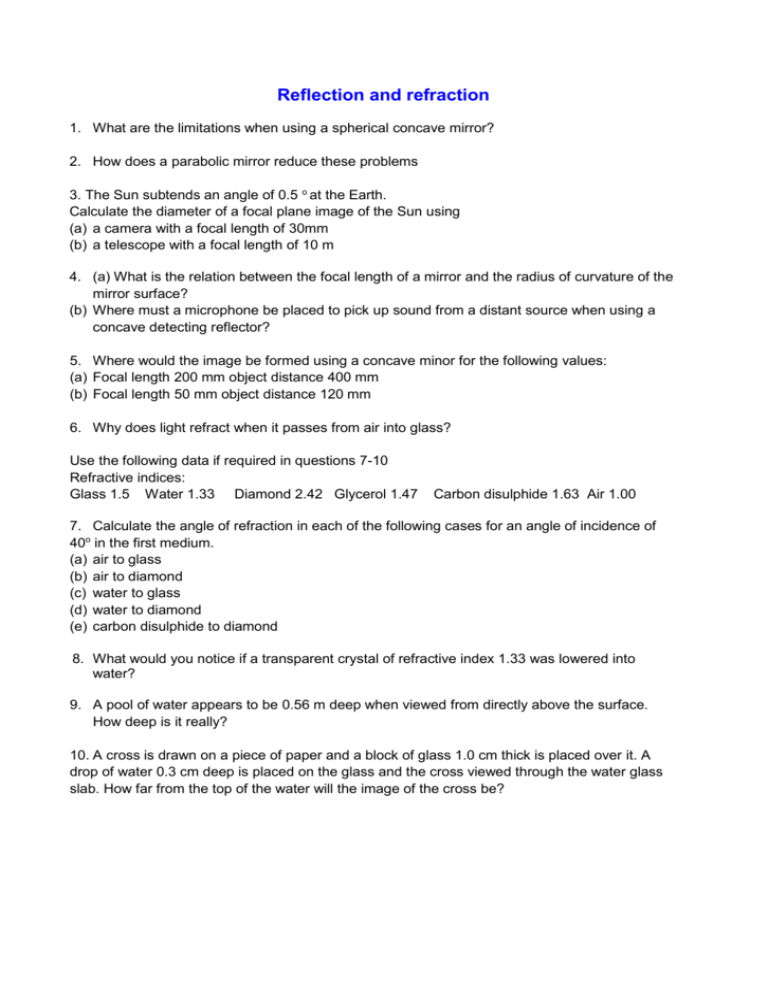
Reflection and refraction 1. What are the limitations when using a spherical concave mirror? 2. How does a parabolic mirror reduce these problems 3. The Sun subtends an angle of 0.5 o at the Earth. Calculate the diameter of a focal plane image of the Sun using (a) a camera with a focal length of 30mm (b) a telescope with a focal length of 10 m 4. (a) What is the relation between the focal length of a mirror and the radius of curvature of the mirror surface? (b) Where must a microphone be placed to pick up sound from a distant source when using a concave detecting reflector? 5. Where would the image be formed using a concave minor for the following values: (a) Focal length 200 mm object distance 400 mm (b) Focal length 50 mm object distance 120 mm 6. Why does light refract when it passes from air into glass? Use the following data if required in questions 7-10 Refractive indices: Glass 1.5 Water 1.33 Diamond 2.42 Glycerol 1.47 Carbon disulphide 1.63 Air 1.00 7. Calculate the angle of refraction in each of the following cases for an angle of incidence of 40o in the first medium. (a) air to glass (b) air to diamond (c) water to glass (d) water to diamond (e) carbon disulphide to diamond 8. What would you notice if a transparent crystal of refractive index 1.33 was lowered into water? 9. A pool of water appears to be 0.56 m deep when viewed from directly above the surface. How deep is it really? 10. A cross is drawn on a piece of paper and a block of glass 1.0 cm thick is placed over it. A drop of water 0.3 cm deep is placed on the glass and the cross viewed through the water glass slab. How far from the top of the water will the image of the cross be?
